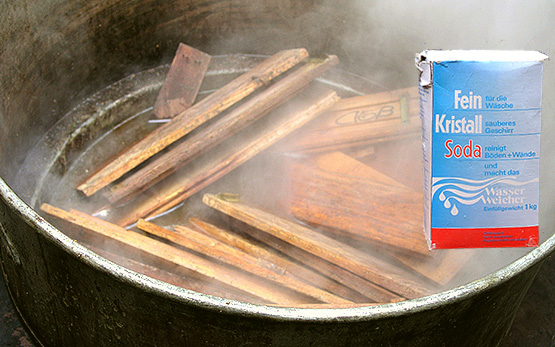Guggenbühl Gasser B., Bongartz A., Mantovani S., Smith K., Guksch T., Nuessli Guth J.
Sensory characterisation and consumer acceptance of plant-based cheese alternatives: A Swiss perspective.
Food Quality and Preference, 136, 2026, Articolo 105713, 1-15.
Blaix C., Dumont B., Bloor J.M.G., Zagaria C., Fleurance G., Joly F., Huguenin-Elie O.
Agroecological interventions increase biodiversity and the potential for climate change mitigation in Europe.
Agriculture, Ecosystems & Environment, 395, 2026, Articolo 109938.
Guggisberg D., Portmann R., Egger C., Schmidt R.
Predicting water activity in long-ripened cheeses using moisture, salt, free amino acids and lactate.
International Dairy Journal, 172, 2026, Articolo 106443.
Li Y., Ammann J., Helfenstein J., Williams T. G., Levers C., Mohr F., Diogo V., Zafeiriou R., Rolo V., Beckmann M., Hernik J., Kizos T., Herzog F.
The potential of variable-rate technology for sustainable intensification of European arable farming.
European Journal of Agronomy, 172, 2026, Articolo 127868.
Dos Reis Martins M., Calanca P.
Model projections indicate substantial decrease in yield stability for summer crops in Switzerland, but less so for winter crops.
European Journal of Agronomy, 172, 2026, Articolo 127855.
Silacci P., Perrey B., Joye C., Inderbitzin J., Lerch S.
Swiss beef meat tenderness improvement in the period 2009–2013.
Meat Science, 231, 2026, Articolo 109953.
Bretscher D., Grassnick N., Isaacs C., Heidecke C., Koster B., Merbold L., Leifeld J.
Opportunities and limitations of farm-level greenhouse gas accounting tools: An overview based on experience from practice.
Science of the Total Environment, 1003, 2025, Articolo 180688.
Odongo V., Leitner S. M., Dowling T. P. F., Gluecks I., Jackowicz‐Korczynski M., Rinne J., Wooster M. J., Merbold L.
Contrasting carbon and water flux dynamics in an East African rangeland and cropland.
Journal of Geophysical Research: Biogeosciences, 130, (10), 2025, Articolo e2024JG008623.
Oggier A., Conedera M., Rizzoli A.
Habitat management as an integrative strategy for Flavescence dorée: A case study of wild-growing common hazels hosting the alternative vector Orientus ishidae (Hemiptera: Cicadellidae).
Journal of Economic Entomology, In Press, 2025, Articolo toaf249.
Rödiger M.
D1.1 - Database on food products with high waste impacts.
WasteWise (Horizon Research and Innovation Actions). 29 October, 2025, 53 pp.
Keel S., Anjum M. M., Lesschen J.P., Madenoğlu S., Pape B., Pınar M. Ö., Leifeld J.
Identifying areas with low vs. high trade-offs of fertilization reduction for soil carbon storage and crop production in Europe, under the Farm to Fork strategy.
EJP SOIL. September, 2025, 4 pp.
Strebel S., Imhoff Y., Weisflog T., Watroba M., Levy Häner L.
Orge d’automne 2025 : Résultats WG40 (Extenso) et WG42 (PER).
Agroscope Transfer, 611, 2025, 1-36.
Mayer J.
Nitrogen fixation and dynamics in organic agriculture in temperate climates.
In: Advances in Organic Farming. Ed. CABI Books. 2025, 208-216.
Treier S.
Optical lean phenotyping methods in the context of wheat variety testing.
ETH Zürich. Diss. No. 31161, 2025, 286 pp.
Huber S., Zosso C., Felmer B., Momen M., Altenbuchner C.
Landwirtschaft. Klima. Wandel.: Ideen für den Weg aus der Klimakrise.
Klimaneutrale Landwirtschaft Graubünden. 2025, 76 pp.
Gindro K., Shani N.
Les micro-organismes constituent une biodiversité invisible et précieuse.
Journal Agri, 31 octobre, 2025, 21-22.
Graf T., Moser F., Embleton H., Niklaus P., Grabenweger G.
Which factors influence the virulence of entomopathogenic fungi?: Effect of spore type, oosporein, application method, and pathway of entry on the infectiveness of Beauveria brongniartii against Melolontha melolontha.
Journal of Applied Microbiology, 2025, Articolo lxaf259.
Antonacci A., Lazzari G., Bee G.
Method: A standardised laboratory method for measuring ammonia volatilisation from pig slurry using a dynamic flux multichamber system.
Animal Open Space, 4, 2025, Articolo 100111.
Goto B.T., Silva G.A., Błaszkowski J., Niezgoda P., Corazon-Guivin M.A., Laurentino de Oliveira N.V., Sieverding E., Oehl F.
Phylogeny and morphology of two new arbuscular mycorrhizal fungal genera, with an identification key for all genera within the order Glomerales.
Mycological Progress, 24, 2025, Articolo 73.
Neff F., Chittaro Y., Korner-Nievergelt F., Litsios G., Martínez-Núñez C., Rey E., Knop E.
Contrasting 50-year trends of moth communities depending on elevation and species traits.
Ecology Letters, 28, (8), 2025, Articolo e70195.







